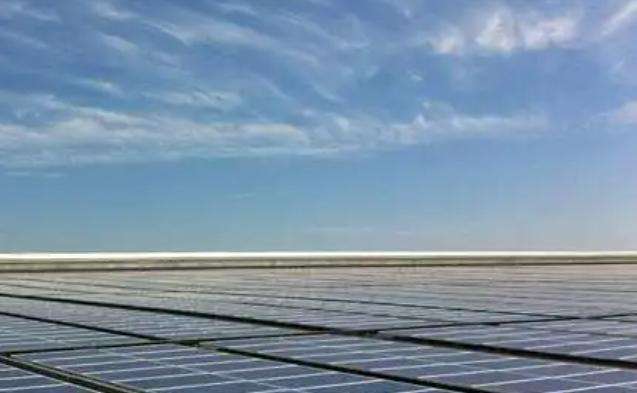Hazards of photovoltaic power generation: fire risks, hidden faults of power station equipment, and grounding failure risks.
1. Fire risk
Photovoltaic power generation equipment has been running in an outdoor environment for a long time. The erosion of light, rain, sand, etc. will accelerate the cable The aging of equipment such as connectors and equipment leads to a decrease in equipment insulation performance, causing equipment failure and even fires.
Therefore, it is necessary to regularly test the electrical wiring and power generation equipment of the photovoltaic system, and make necessary repairs or replacements for aging cables and equipment to ensure the safe operation of the system and reduce the risk of fire.
2. Hidden faults of power station equipment
Irregular operation of photovoltaic modules during transportation and installation will cause internal cracks, trees, and weeds Or the shielding of bird droppings will cause hot spots to form on the components. These hidden faults will not only affect the output performance of the components, but also lead to fire accidents in severe cases.
Since these hidden faults cannot be directly detected with the naked eye, it is necessary to use professional instruments to regularly detect components, eliminate hidden faults in a timely manner, and prevent safety accidents.
3. Risk of grounding failure
Like all electrical equipment, photovoltaic modules and mounting systems must be grounded to reduce potential electric shock and fire threats. If the performance of the grounding system degrades over time, it increases the likelihood of electrical shock to personnel approaching and coming into contact with metal parts of the PV system.
In the event of an electric shock, the damage may be severe due to the high voltage of the photovoltaic array. Therefore, it is necessary to conduct regular grounding performance testing and maintenance to effectively prevent the degradation of grounding performance.
Principle of photovoltaic power generation:
The main principle of photovoltaic power generation is the photoelectric effect of semiconductors. When a photon irradiates a metal, all its energy can be absorbed by an electron in the metal. The energy absorbed by the electron is large enough to overcome the Coulomb force inside the metal atom to do work, escape from the metal surface, and become a photoelectron.
Silicon atoms have 4 outer electrons. If atoms with 5 outer electrons, such as phosphorus atoms, are doped into pure silicon, it becomes an N-type semiconductor; if 3 atoms are doped into pure silicon, Atoms with outer electrons, such as boron atoms, form a P-type semiconductor.
When P-type and N-type are combined together, a potential difference will form on the contact surface and become a solar cell. When sunlight hits the P-N junction, current flows from the P-type side to the N-type side, forming an electric current.
The photoelectric effect is an important and magical phenomenon in physics. Under the irradiation of electromagnetic waves higher than a certain frequency, the electrons inside certain substances absorb energy and escape to form an electric current, that is, photoelectricity.
Reference for the above content: Baidu Encyclopedia-Photovoltaic Power Generation
Does the grid-connected operation of photovoltaic power generation and wind power generation require a converter? Why?
Generally, wind power plants have relatively sufficient sunlight due to site selection. In order to better utilize clean energy, they will At the same time, photovoltaic power generation is used at the same time as wind power generation. Simply put, photovoltaic power generation is the use of solar energy to generate electricity. Photovoltaic wind power refers to the simultaneous use of wind energy and solar energy to generate electricity.
Generally speaking, it is necessary for photovoltaic power generation, taking solar power stations as an example. The solar cells emit direct current, and the power supply from the grid is usually alternating current, so a converter is needed to convert the DC into the grid. The required communication; and in the early days of wind power development, there were small-power wind turbines that could directly connect the electricity generated by the wind speed in a certain range to the grid without going through a converter. However, with the development of technology, in order to obtain more For large-scale wind speed power generation, the currently widely used doubly-fed units and direct-drive units use converters to convert the generated energy into electrical energy that meets the requirements for access to the grid. Therefore, currently technically speaking, it is necessary to connect to the grid through a converter. Mainstream!














